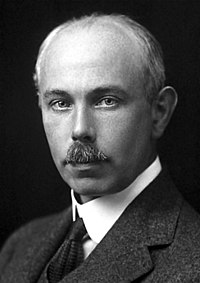
In chemistry, the whole number rule states that the masses of the isotopes are whole number multiples of the mass of the hydrogen atom.[1] The rule is a modified version of Prout's hypothesis proposed in 1815, to the effect that atomic weights are multiples of the weight of the hydrogen atom.[2] It is also known as the Aston whole number rule[3] after Francis W. Aston who was awarded the Nobel Prize in Chemistry in 1922 "for his discovery, by means of his mass spectrograph, of isotopes, in a large number of non-radioactive elements, and for his enunciation of the whole-number rule."[4]
- ^ Budzikiewicz H, Grigsby RD (2006). "Mass spectrometry and isotopes: a century of research and discussion". Mass Spectrometry Reviews. 25 (1): 146–57. Bibcode:2006MSRv...25..146B. doi:10.1002/mas.20061. PMID 16134128.
- ^ Prout, William (1815). "On the relation between the specific gravities of bodies in their gaseous state and the weights of their atoms". Annals of Philosophy. 6: 321–330. Retrieved 2007-09-08.
- ^ Christopher G. Morris (1992). Academic Press Dictionary of Science and Technology. Gulf Professional Publishing. pp. 169–. ISBN 978-0-12-200400-1.
- ^ "The Nobel Prize in Chemistry 1922". nobelprize.org. The Nobel Foundation. 1922. Retrieved 2014-08-13.